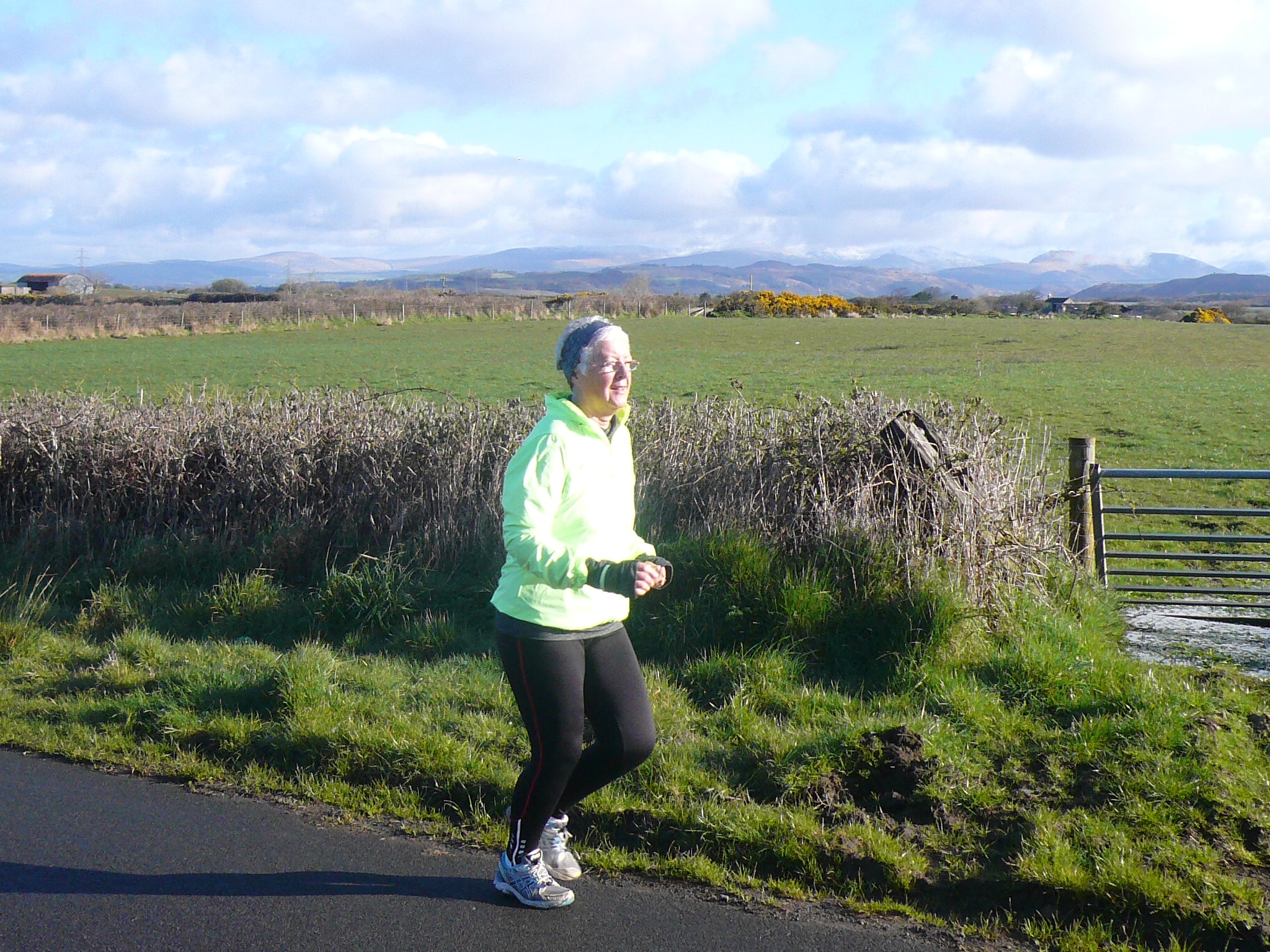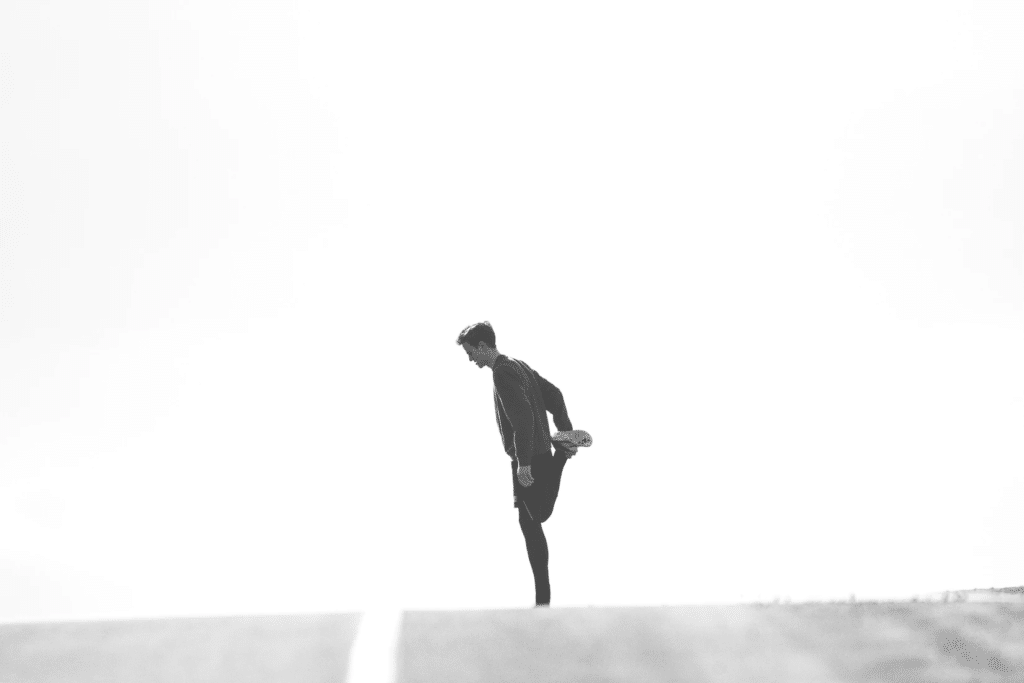Six Principles of Triathlon Training for Seniors

Triathlon training must change as we age to reflect the changes in our bodies. The consequences of improper training can be career-ending. Following an approach that recognizes six principles of triathlon training for seniors age 50 and over will ensure strong performance.
Meanwhile, many of the questions I receive indicate that most triathlon training programs do not consider the changes that occur with aging. This post is the beginning of an effort to address age-related needs for the senior triathlete.
Introduction
Academic research has shown that decreased performance with age is not a given. Often, decreases have more to do with reduced energy, lower intensity in training, and less time spent training.
In one study, researchers measured VO2 max, an indicator of the size of one’s athletic engine, of elite athletes of various ages. The study showed a linear decline with age for athletes from age 18 to 103. However, they did not observe a ‘cliff ‘, or abrupt change, in performance.
On the flip-side, triathlon training following the six principles outlined here will help senior triathletes continue strong and with minimal injury.
How Should Triathlon Training Change for Seniors?
Consistent exercise can slow aging. However, being consistent can be easier said than done. For some, lower energy with age makes it difficult to find the motivation for regular exercise. For others, jam-packed schedules make consistent exercise a challenge.
Also, the physiological changes that occur with age are the ingredients for more injuries. Never in our lives has the adage “working smarter, not harder” been more appropriate.
Physiological Changes with Age
King David understood what researchers today confirm – the human body is awesome. David wrote in Psalm 139:14 “I praise you, for I am fearfully and wonderfully made. “
Included in this wonderful design of the human body is the capability for self-repair of many types of tissue, including those of the muscles, tendons, and bones. Through repair, muscles become stronger during strength and endurance training. This same process promotes recovery from injuries.
However, in the typical aging process, our bodies become less efficient in making these repairs. Recovery from normal exercise and especially from injury takes longer. Tissues become stiffer. Taken together, these ultimately affect our athletic performance.
We need not give up, however. Recent research cited in Masters Athletes: A Model for Healthy Aging has shown that our ‘old’ cells can be re-programmed through physical exercise to behave like younger cells.
According to a report published in Preventive Medicine, people who did the equivalent of 30-40 minutes of jogging per day, five days a week showed biological markers of a person seven years younger.
The Aging Musculoskeletal System
Beginning at around age 50, our skeletal muscles lose cells and become smaller and stiffer according to Dr. Vonda Wright in Masters Athletes: A Model for Healthy Aging. Accompanying this decrease in muscle mass is a reduction in strength and the power they are able to generate.
More frequent muscle strains and joint pain also result from reduced muscle mass and strength and increased stiffness. For example, knee pain, sometimes incorrectly attributed to osteoarthritis, often highlights weak quadriceps. Shoulder pain in swimming is often a consequence of ignoring the smaller muscles responsible for joint stability. Finally, hip injuries are often rooted in stiffness and weakness of the core and gluteal muscles.
Tendons stiffen with age, in part, because of decreases in water content, hormonal changes, and thickening of elastin fibril tissue. On top of this, overuse which produces micro tears in the tissue leads to further stiffening of connective tissues .
Overuse injuries, those caused by continuing to exercise fatigued and/or tight muscles, are the most common among senior athletes. So here’s the dilemma: We need to keep moving to be strong and flexible, but moving more can lead to injury. Hint: strength training and stretching are two of the six pillars of triathlon training for seniors.
Nothing good happens in running, or in most sports, when you get tight. Tight muscles never outperform loose muscles simply because their range of motion is restricted, meaning they can’t move the full length for optimal power.
Ryan Hall from Run the Mile You’re In
Our Cardiovascular System and Aging
The lower mass and stiffening of tissue observed in older muscles and tendons is also seen in the cardiovascular system. According to Dr. Wright, “a 70-year old heart has 30% fewer cells than the heart of a 20 year-old.”
With the stiffening comes less efficient delivery of much-needed oxygen to cells. With less oxygen, performance, metabolism, and energy levels suffer.
The good news is that through endurance training, oxygen consumption increases. Dr. Wright reports that “Through endurance conditioning, one is capable of modifying maximum oxygen consumption, diastolic filling, relaxation, and arterial stiffness.”
Aging and Nutrition
How do the changes in our bodies affect our needs for fueling before, during, and after training?
As reported in “What Masters Athletes Need To Know About Nutrition“, the physiological changes that take place with age mean that we need “fewer (net of exercise) calories, higher amounts of protein, and greater amounts of key nutrients”. We also need to pay close attention to staying hydrated which can be accomplished through choices of food and drink.
Principles of Training for Senior Triathletes
- More stretching
- Proper strength training
- Leveraging high-intensity interval training
- Getting enough rest
- Staying hydrated
- Nutrition – eating enough of the right food
More Stretching
Proper warm-up and stretching before vigorous exercise with additional stretching during cool down prevents the gradual shortening of tendons and cartilage. From my experience, I can say the same for muscles.

Photo by Abigail Keenan on Unsplash
Stretching the entire body prevents imbalances. For example, in my early days of running, I was religious about stretching my hamstrings after running. However, I was not as diligent about stretching my quadriceps.
A chiropractor who diagnosed my knee pain identified an imbalance of flexibility in these two muscles. After a short time of consistent stretching of my quadriceps, the knee pain disappeared.
Related post: Optimal Stretching Pre and Post Workout
Proper Strength Training
Earlier, I highlighted the connection between injury and muscle strength. Weak muscles are more prone to injury and provide less support for joints during activity.
It is important to strengthen the right muscles. While many athletes focus on strengthening cosmetic muscles (biceps, triceps, calves), these may not be the best ones on which to focus.
There are also plenty of personal stories in favor of strength training. One example is from ultrarunner Judy Cole (age 73). Judy ran every day during her early 30s. However, early on, she reported having problems with her knees. Strengthening her quads and hamstrings eliminated the pain allowing her to continue running.
Related post: Review of Mark Allen’s Strength Training for Triathletes
Related post: ‘At the Core’ – Strength Training to Help Seniors Perform Better and Avoid Injury
Leveraging High-Intensity Interval Training
High-intensity interval training, or HIIT for short, is an approach to training characterized by short periods, or intervals, of high-intensity exercise followed by periods of recovery.
HIIT first gained notoriety in 1996 through a report published by the Japanese speed-skating coach and professor Izumi Tabata. Tabata’s paper documented the value of HIIT for elite athletes. Another study published in the Journal of Applied Physiology documented the benefits of HIIT over medium-intensity training for increasing VO2 max, an indicator of aerobic fitness. HIIT continues to be used for athletes of all levels, including cyclists and distance runners, for both endurance and strength training.
I have included HIIT here because it’s used for training in swimming, biking, and running. It also supports strength and fitness while simultaneously reducing the risk of overuse injury compared to long periods of lower intensity training. It also promotes variety and exercising of the entire body.
For more information about HIIT training and its benefits, look at Dr. Joseph Tieri’s book Staying Young with Interval Training. After an introduction to HIIT and its benefits, most of the book shows various HIIT exercises.
Related post: Why Senior Triathletes Should Use Interval Training
Getting Enough Rest
Rest and recovery apply to all ages. As suggested in an earlier post, we ought to make consistent, high-quality sleep a priority.
However, one liability of age can be the ‘ability’ to persevere through pain. If you only take one lesson from this post, it is that we must train smarter, not just harder, with age.
Tired muscles are more prone to injury. Abused cartilage and muscle will get their revenge. It is best to rest or change your training plan to avoid aggravating sore areas.
Staying Hydrated
As we age, our sensation for thirst becomes weaker. At the same time, lower water content of body tissue is one contributor to injury. The message? Stay hydrated.
Nutrition – Eating Enough of the Right Food
Consuming additional protein to ensure that we are producing muscle from strength training is the most significant takeaway. Eating anti-inflammatory foods and a full range of different colored fruits and vegetables is good advice for all ages. See the related post below for more detailed advice.
Related post: What Masters Athletes Need To Know About Nutrition
What Is Your Experience?
Please share your questions and comments below.
We would love to hear what you have learned from your experiences? Your reading? From your coaches or training partners?
How have you adjusted your training with age?
“Let us run with endurance the race that is set before us,” Hebrews 12:1
Comments: Please note that I review all comments before they are posted. You will be notified by email when your comment is approved. Even if you do not submit a comment, you may subscribe to be notified when a comment is published.
You May Be Interested in Reading . . .
Disclaimer: Please note that SeniorTriathletes.com is a participant in the Amazon Services LLC Associates Program. This is an affiliate advertising program that provide a way for sites to earn advertising fees. They do this by advertising and linking to amazon.com. Amazon, the Amazon logo, AmazonSupply, and the AmazonSupply logo are trademarks of Amazon.com, Inc. or its affiliates. As an affiliate, I will receive a small commission for any purchases of this product that you make through Amazon.



Thank you for the informative articles. Currently getting ready for my first sprint tri. I would add “adequate warm-up” to your list of training principles. Feels like it take forever to get my body moving at 57.
Charlie,
First of all, congratulations on taking the plunge into triathlon. I hope you will keep us informed of your journey. Thanks also for the comment about warm-up. What is your approach to warming up? Are you still refining it? Are you following a plan developed by a coach or another person age 50 or over? Please stay in touch.
This article is music to my 68 year old ears. I no longer worry about feeling knackered days after a triathlon. Roll on the next 70.3!
Thank you for your comment, Nick. While I am also 68, I do not have the courage to try to do a 70.3. Congratulations. Let me know about your next race.
Thanks. How much more recovery time do seniors need after workouts? I do Sprint 8 HIIT run training along w strength training, should I do bike HIIT and swim HIIT too? Completed a sprint tri today at age 62, but pretty slow relative to others in my age group, how to interpret performance?
Is all or most of your training based on HIIT?
Outstanding information as usual. I especially like the integration of strength training…intervals. strength, nutrition and rest….magic!!!
Thanks for your feedback Marty. I hope your training is going well.
Im 69 male doing sprint triathlons. Looking for help.
William,
What type of help are you looking for? In a specific sport?
a training program for sprint triathlons for 6 weeks out.